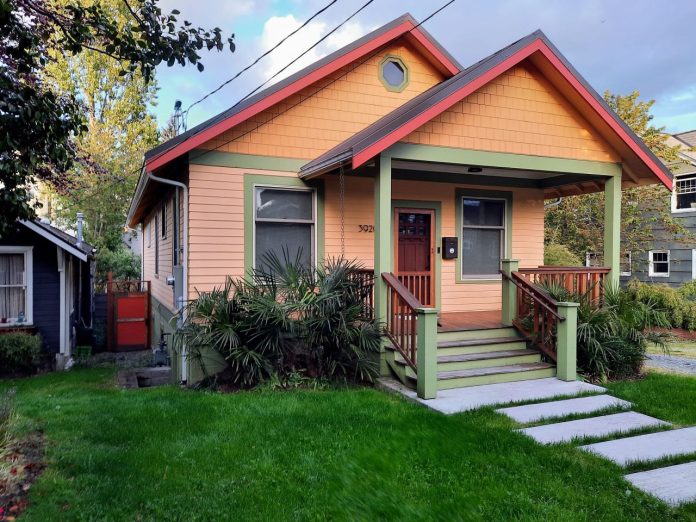Accessory dwelling units (ADUs) just got a bit easier to build in Seattle, as legislation passed in May went into effect yesterday. The impact of the reforms may be short-lived though, as the City is poised to adopt wider middle housing reforms citywide in the coming months, making other forms of housing more desirable to build. Nevertheless, the ADU reforms will help Seattle meet state mandates to make ADUs easier to construct on most lots.
Mayor Bruce Harrell called ADUs a key element of his agenda addressing “urgent” housing affordability issues as he rolled out his legislation in September.
“Making progress on Seattle’s urgent housing affordability needs requires not only increasing overall production, but increasing the diversity of housing available,” Harrell said in a statement. “ADUs are a key element of our One Seattle Housing Agenda as an efficient, sustainable option to address the housing shortage while also creating new opportunities for first-time homebuyers, multigenerational living, age-friendly housing, and financial stability for homeowners while also preventing displacement.”
In the fall, Harrell’s Office said they had hoped to enact the changes well ahead of the state deadline, but passing the proposal ended up taking another eight months. As a result, the provisions went into effect on the last day before the state deadline hit at the end of June.
Passed as part of a series of statewide housing reforms in 2023, House Bill 1337 pushes cities to relax ADU regulations, with most Puget Sound cities facing the same deadline as Seattle. In most cases, the state bans parking mandates for new ADUs within a quarter mile of a major transit stop. Seattle had already done away with off-street parking requirements for ADUs in 2019, but many other jurisdictions will need to revise their regulations to comply.
What’s in the new ADU reform
Under Seattle’s new provisions, attached and detached accessory dwelling units will be permitted in all zones where single-family residences are allowed and allow for up to two ADUs on the same lot as a principal residence — which doesn’t necessarily have to be a single-family residence. That’s a marginal increase in the number of ADUs allowed outside of Neighborhood Residential (NR) zones.
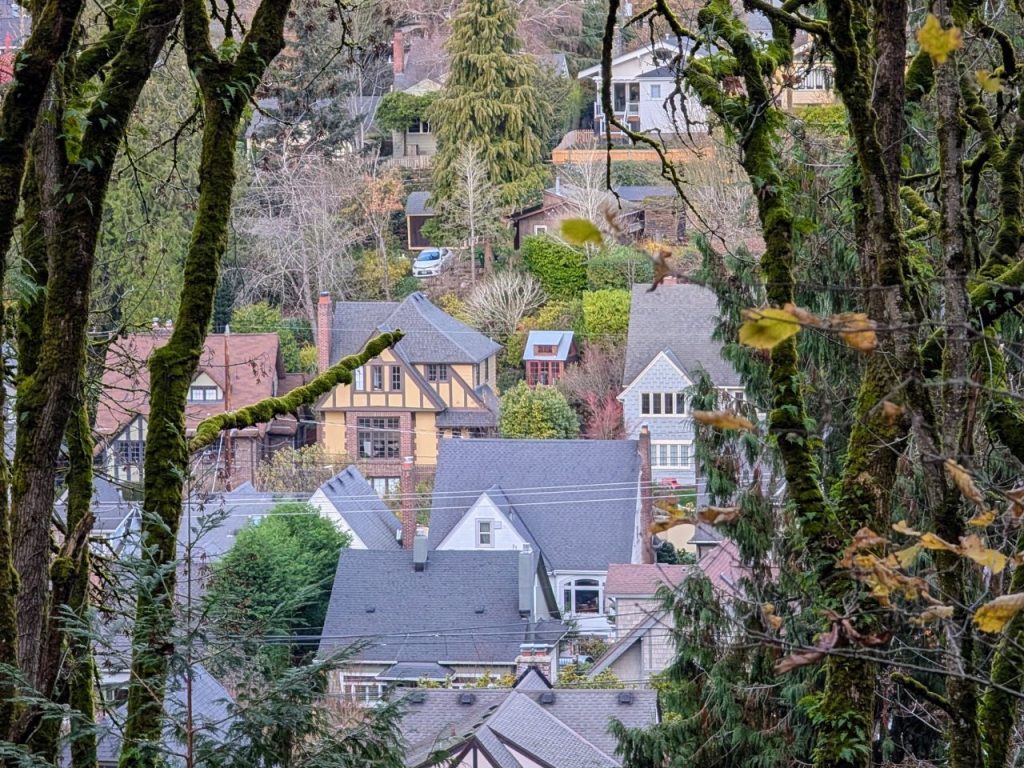
Most ADU regulations have been consolidated to a single section in the City’s Land Use Code rather than being spread across chapters. The new legislation provides for a spate of provisions that will encourage ADU construction:
- The configuration of ADUs on lots will be more flexible than ever before, allowing ADUs to be attached, detached individually, or even in a detached structure when two detached accessory dwelling units (DADUs) form a de facto duplex.
- Unit lot subdivisions will now be possible when a DADU is present on a parent lot, provided that the DADU is located on the same unit lot as its related principal residence.
- The height limit for ADUs will increase to 32 feet in the NR and Residential Small Lot (RSL) zones — a significant increase above the current highest limit of 18 feet in those zones — as well as 32 feet in multifamily zones, up from a 20-foot height limit. In other zones, the height limit for ADUs will generally be 40 feet or more.
- The maximum floor area above ground for ADUs will be 1,000 square feet, as is already the case in NR and RSL zones. For multifamily zones, this increases the maximum allowed floor area by 350 square feet. Additionally, the maximum floor area limit may be exceeded in all zones when converting space in an existing principal residence, as currently allowed in NR and RSL zones.
- Limitations on entrance locations to ADUs and exterior stairs will no longer apply.
- Favorable conversion provisions that exist in NR and RSL zones will apply to all zones, allowing for easier conversion of existing accessory structures that may be nonconforming to development standards to be converted to and expanded as ADUs.
- Street improvement requirements will not apply to the creation of ADUs, except when a project necessitates repair or replacement of the street (e.g., tearing up an existing paved street or sidewalk for site construction).
Middle housing reform could amend changes
However, interim middle housing legislation did make some changes to the new ADU regulation. Under the adopted legislation, ADUs will count as dwelling units for density purposes in NR and RSL zones and become subject to lighter-touch amenity area and design standards in multifamily zones.
Seattle’s interim middle housing legislation came about after the City struggled to meet the state deadline, due to external legal appeals and internal delays hashing out the plan within the Harrell Administration. The state deadline for middle housing reform, which also loomed at the end of June, was set in 2023’s House Bill 1110.
The City has pledged to come back quickly and pass permanent legislation to give builders more certainty about what housing they can build in Neighborhood Residential zones. Some blocks today zoned NR are set to become “Neighborhood Centers” with denser zoning designations to go along, sometime next year.
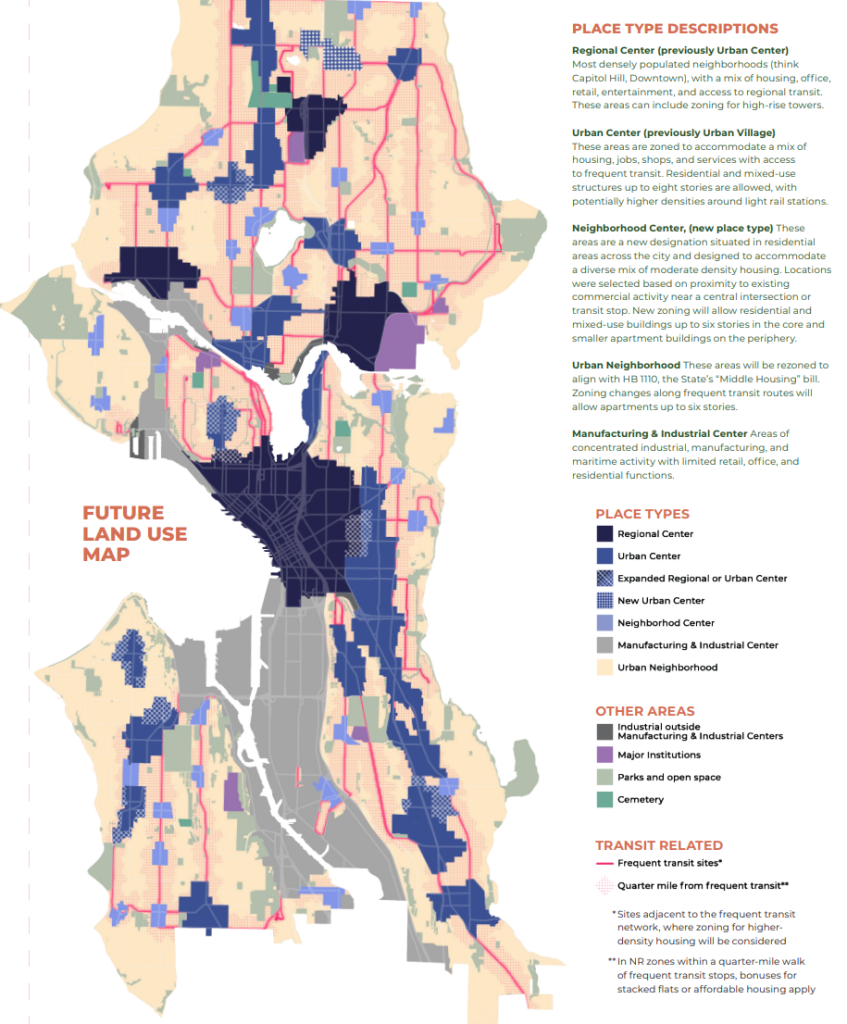
Permanent legislation proposed for middle housing — slated for adoption this fall — would make further changes to ADU laws in the city. Key changes could limit the number of ADUs allowed on all lots to just two, regardless of how many principal residences exist on a lot, and counting ADUs as dwelling units in all zones with density limits.
Another proposed change would strike reduced building separation requirements, which could mean setting DADUs further away from principal residences.
However, the permanent legislation would simplify ADU regulations by largely applying basic development standards within zones that regular principal residences are subject to, such as height limits, lot coverage, floor-area ratio (FAR), and setbacks. That mostly keeps or adds favorable regulations for ADUs, but may not necessarily make them more attractive than other middle housing types.
The draft legislation keeps the ADU size limit at 1,000 square feet of floor area above ground, despite Harrell’s Office previously floating the idea of increasing it. Following the statewide reform, 1,000 square feet is the smallest ADU size limit that cities are allowed to set.
ADU reforms and remaining obstacles
The reform is the latest chapter in the longer saga of Seattle’s attempts to spur ADU production.
In 2019, the Seattle City Council passed sweeping ADU legislation allowing ADUs on nearly all lots in NR zones, including new allowances for larger DADUs and up to two ADUs per lot. The process to enact the legislation took several years after former Councilmember Mike O’Brien first proposed it in 2016. Legal appeals by homeowner groups delayed enactment, but ironically led to broader reforms to ADU regulations than initially contemplated.
In 2020, the City followed up the ADU reform by launching a webpage with pre-approved designs called ADUniverse that was intended to make it easier and more enticing for homeowners to add a cottage in their backyard. Unique site conditions (trees, slopes, etc.) limit the extent to which generic designs negate the need to hire an architect.
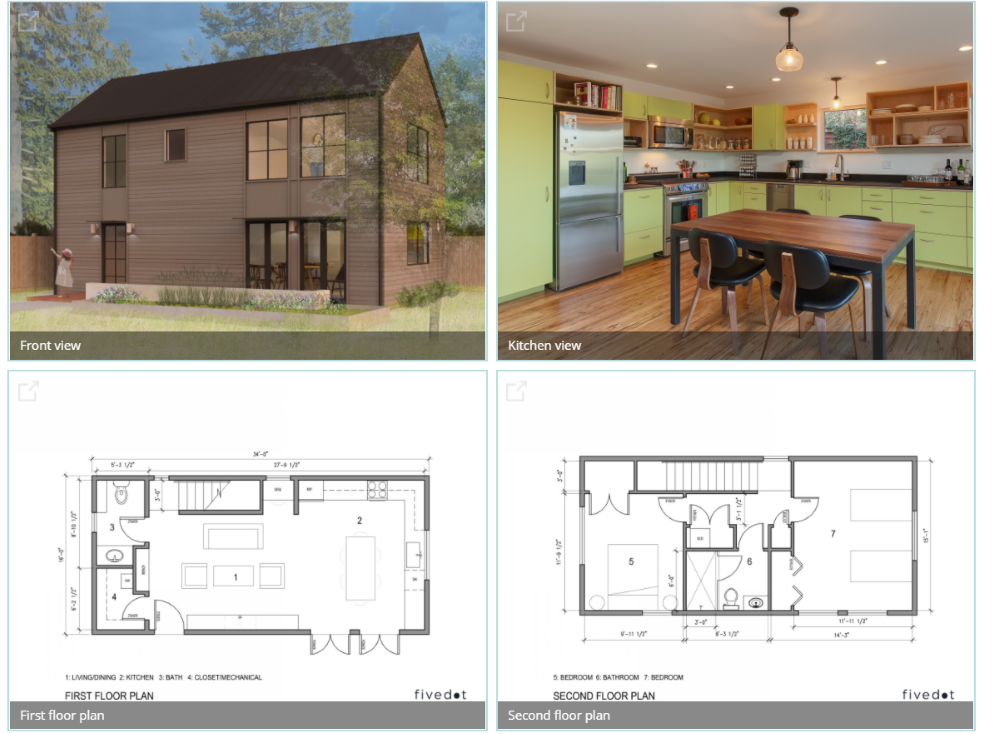
Seattle’s 2019 ADU reform succeeded in boosting permitting and production, but it hasn’t been a panacea. The City noted headwinds, pointing to high interest rates as a culprit in slowing momentum.
“A recent analysis from the Office of Planning and Community Development (OPCD) found that the City issued 987 permits for ADUs in 2023, a fourfold increase over 2018 permitting levels,” the Mayor’s Office noted in September. “However, ADU permit applications have fallen this year by nearly 40% compared to the same period in 2023, as interest rates hit a 20-year peak. The new incentives will remove regulatory barriers to help make the construction of ADUs more feasible for homeowners, while remaining consistent with Seattle’s building code, short-term rental code, and tree code.
Even if the path to a building permit is clearer, high regulatory costs remain a major obstacle. While the new ADU ordinance seeks to reduce costs related to transportation improvements, high utility hook-up fees have remained an obstacle. Such fees are much harder for small-scale builders to bear compared to well-capitalized large-scale builders, and can kill project feasibility.
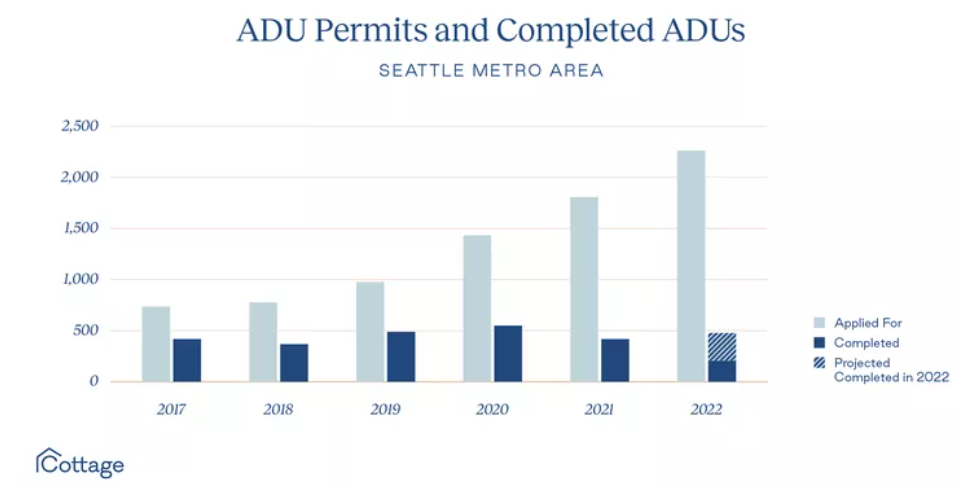
Rising costs and unexpected fees appear to be contributing to a trend of homeowners sitting on ADU permits rather than moving forward. Only 37% of ADU permits submitted to Seattle between 2017 and 2021 resulted in a completed building, Alex Czarnecki, founder of Cottage, a platform that assists with ADU construction, reported in 2023.
The Mayor’s Office has presented a proposal to lessen water hook-up fees by providing a pot of public money for cost-sharing for water main system upgrades. However, some in the development community — including civil engineer Donna Breske in an Urbanist op-ed — have criticized the move as not going far enough and falling short in addressing the cost issue.
Overall, the vast majority of Seattle’s housing growth continues to be provided by large apartment buildings. That said, ADUs offer a safety valve, albeit a small one, thus far, with the latest reform hoping to continue to build on that fledgling momentum.
Doug Trumm is publisher of The Urbanist. An Urbanist writer since 2015, he dreams of pedestrian streets, bus lanes, and a mass-timber building spree to end our housing crisis. He graduated from the Evans School of Public Policy and Governance at the University of Washington in 2019. He lives in Seattle's Fremont neighborhood and loves to explore the city by foot and by bike.

